#dutch painting
Text

Balthasar van der Ast
Vase with a single Tulip
1625
#Balthasar van der Ast#dutch artist#dutch art#dutch painting#dutch painter#tulips#tulipmania#flowers#flower art#flowers in art#flower painting#beautiful flowers#floral painting#floral art#floral#art history#aesthetictumblr#tumblraesthetic#tumblrpic#tumblrpictures#tumblr art#aesthetic#beauty#tumblrstyle
19 notes
·
View notes
Text



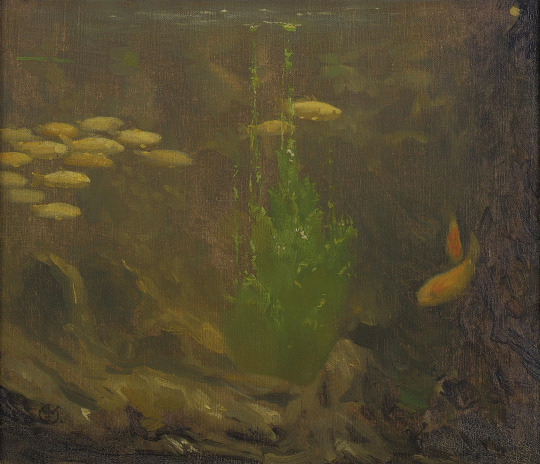



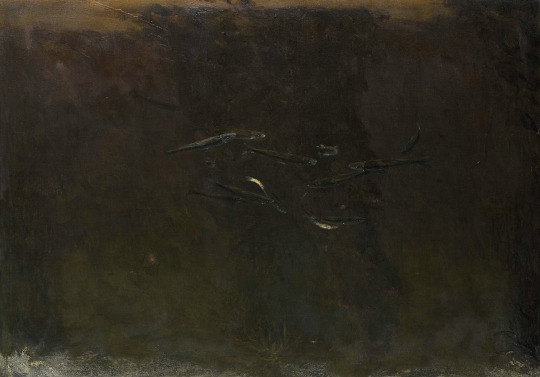
Gerrit Willem Dijsselhof - Fish
1K notes
·
View notes
Text

Cornelis Cornelisz. van Haarlem, The Fall of the Titans (detail), 1588-1590. Oil on canvas, 239 x 307 cm. National Gallery of Denmark, Copenhagen.
#art#painting#detail#1500s#16th century#dutch art#dutch painting#netherlandish art#netherlandish painting#baroque#baroque art#baroque painting#van haarlem#Cornelis Cornelisz. van Haarlem
473 notes
·
View notes
Text


Jacob van Walscapelle — Flowers in a Glass Vase. circa 1670. details
#jacob van walscapelle#art#art history#art detail#detail#details#painting#17th century#17th century painting#dutch golden age#dutch painting#dutch#van walscapelle#flowers
260 notes
·
View notes
Text

Girl Reading a Letter at an Open Window, Johannes Vermeer (c. 1657) Gemäldegalerie in Dresden
#art history#art#artists on tumblr#vermeer#oil on canvas#dutch painting#painting#oil painting#johannes vermeer#17th century art#17th century#dutch painters#dutch golden age#dutch art#dresden#artwork#classical art#classic art
1K notes
·
View notes
Text

Johannes Vermeer - Officer and Laughing Girl (c. 1657)
#art history#paintings#art#dutch#netherlands#dutch golden age#dutch painting#dutch painter#baroque#genre#genre painting#17th century#1600s
95 notes
·
View notes
Photo
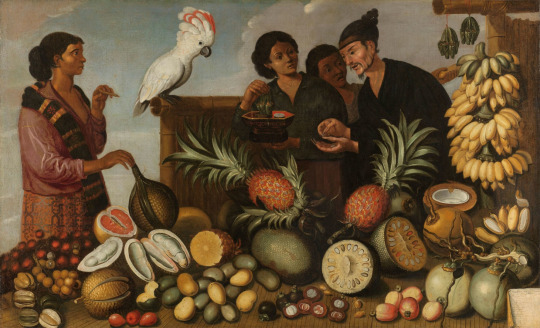
A Market Stall in Batavia, Andries Beeckman (attributed to), Albert Eckhout (rejected attribution), c. 1640 - c. 1666
The Dutch and Malay inscriptions on the piece of paper in the lower right corner identify this as a Dutch painting of subjects studied on the spot. Most of the fruit varieties are found only in Indonesia, the former Dutch East Indies, and were not exported to Europe at the time. The combination of figures from different countries suggests that the setting is most probably the very cosmopolitan Batavia, modern-day Jakarta.8 A Chinese merchant, recognizable as such from his distinctive goatee, moustache and remarkably long fingernails, is counting coins in a fruit stall set off with bamboo partitions. Standing on the left is a woman wearing a typically Javanese sarong and kebaya and holding a small cigar in one hand while placing a durian upright with the other. A second Javanese woman in the middle is lifting a small bundle of leaf wrappers out of a small Japanese lacquered casket, probably betel leaves. A boy behind her is picking a banana from the bunch hanging on the right. A striking salmon-crested cockatoo (Cacatua moluccensis) is perched on the bamboo screen at the back.
Andries Beeckman went to great lengths to depict the huge diversity of tropical fruit as faithfully as possible, but he was clearly not a professional still-life painter. The different varieties are easily distinguished, but their textures are not convincing. Laid out on the table – some with numbers matching the list on the piece of paper (the latter are given between brackets below) – are, on the far left, from top to bottom, rambutans (Nephelium lappaceum, no. 1), langsats (Lansium domesticum, no. 3) and starfruit (Averrhoa carambola, no. 2). Beside them are a partly cut pomelo (Citrus maxima, no. 4) and durians, one of them sliced (Durio, no. 5). The three small pieces of red fruit at bottom left are water or Malay apples (Syzygium aqueum or Syzygium malaccense, no. 6) or Java apples (Syzygium samarangense), and lying to their right are mangoes (Mangifera indica, no. 7) and pineapples (Ananas comosus, no. 8). Below the two pineapples in the centre are jackfruit, one halved (Artocarpus Heteropyllus, no. 9) and several small mangosteens, some opened (Garcinia mangostana, no. 10). On the right are bananas (no. 11), five coconuts and a halved one (Cocos nucifera), and at the very front cashew apples (Anacardium occidentale). The fruit cut in two in the Japanese casket is probably a sort of lime called a Calamondin orange (Citrofortunella microcarpa).
The Rijksmuseum painting is a reduced version of a canvas from an anonymous series of scenes of foreign peoples and produce that decorated the walls of Schloss Pretzsch an der Elbe in Saxony until 1828 (fig. a).9 In the nineteenth century they were removed, first to Berlin and then to Schloss Schwedt an der Oder in Brandenburg.10 They were seen there in the 1930s by Thomsen, who rather hesitantly attributed them to Albert Eckhout and dated them around the middle of the seventeenth century.11 Schwedt was completely destroyed in the closing days of the Second World War, and all that is left of the works of art are pre-war black-and-white photographs making it clear that the attribution to Eckhout is untenable.12
The connection with the canvas from Schloss Pretzsch also led to this Market Stall in Batavia being wrongly attributed to Eckhout or his circle in the past.13 It is woodenly executed, compositionally clumsy, and is not of the kind of Brazilian subject for which Eckhout is known. Minor differences between the two paintings show that they were not copied after each other but seem to share the same or a similar source. The way in which the fruit and cockatoo are depicted displays a clear resemblance to the only known still life by Andries Beeckman (fig. b), and, interestingly, one of the scenes from the series in Pretzsch castle was definitely based on watercolours by him,14 so the present canvas could also be by Beeckman or someone from his circle.
Very little is known about the picture’s provenance, although there are a few early records of an Indonesian fruit market, and since A Market Stall in Batavia is the only surviving work of that nature there is a great temptation to associate it with those early sources. There is, however, nothing that can be said for certain. Around 1660 Jan Vos wrote an ode about paintings in the collection of Joan Huydecooper, among them an ‘East Indies fruit market’: ‘Who has driven me from the north to the east? / I find myself in the market of the East Indies coast. / Here nature displays her fruit as food for life. / The sight makes my mouth desire the beautiful harvest, / Thus is my stomach now sorely overburdened. / Greedy eyes are not soon satiated’.15 It may well be that the poet was referring to the Rijksmuseum canvas.16 There is a second mention of an ‘East Indies fruit market’ a little later in the collection of burgomaster Mattheus van den Broucke of Dordrecht.17 It is far from obvious that it refers to this Market Stall in Batavia. His picture was one of a series of which the others were described as ‘One ditto, with East Indies animals and fruit’, ‘One ditto, being East Indies lodgings, ‘One ditto’, ‘Three ditto, East Indies women’ and ‘A Moorish woman’.18 It is very possible that the Rijksmuseum painting was also part of a larger ensemble of that kind.
Erlend de Groot, 2022
#hanfu#indonesia#art#sarong#Andries Beeckman#kebaya#懒收巾#jingguan#headwear#dutch painting#A Market Stall in Batavia
74 notes
·
View notes
Text
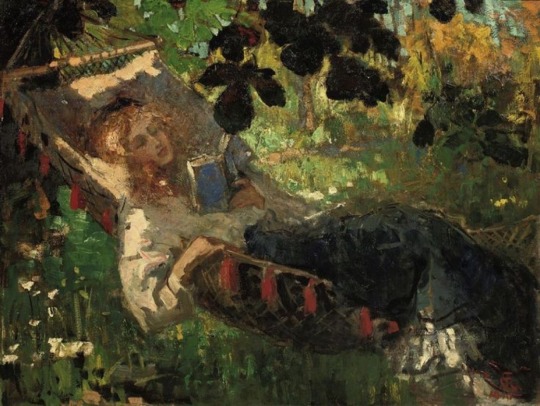
A girl reading in a hammock (1910), Robert Archibalt Graafland (Dutch, 1875-1940)
#art du jour#persephonediary#Robert Archibalt Graafland#dutch artist#dutch art#dutch painter#dutch painting#Dutch#woman reading#women reading#reading#book lovers#literature#art lover#oil on canvas#20th century#art#paintings#painter#always reading#green aesthetic#green academia#art academia#classic academia aesthetic
228 notes
·
View notes
Photo
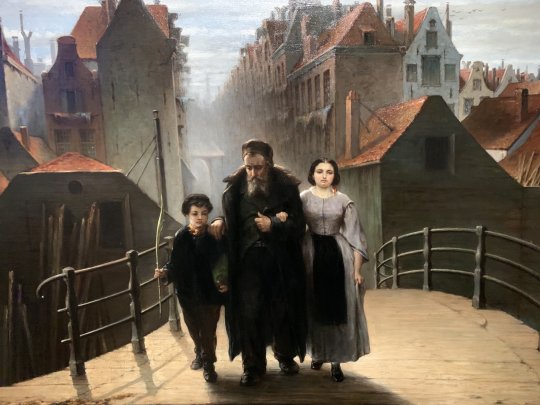
“Loofhuttenfeest in den vreemden” (Feast of Tabernacles with strangers),1863 by Hein Burgers (1834-1899); Jewish historical museum, Amsterdam.
#Loofhuttenfeest in den vreemden#Hein Burgers#painting#18th century#art#Jewish historical museum#Amsterdam#Jewish quarter#people#city#Dutch painting#Dutch#poignant#Jewish
27 notes
·
View notes
Text
Let me introduce you to the painting of the day,

Hendrik Martensz. Sorgh (c. 1610 - 1670)
Jacob Bierens and his Family, 1663
Oil on panel, 52.5 x 71 cm
Amsterdam, Amsterdam Museum
Otherwise called:

I did one single chore and I'm acting like the fucking Messiah
Also known as:

Karel What the Fuck You've Been Gone for Three Hours
Alternatively titled:

The Audacity of My Idiot Son-in-Law
But better known as:

I'm Going to Kill you in Your Fucking Sleep
19 notes
·
View notes
Text
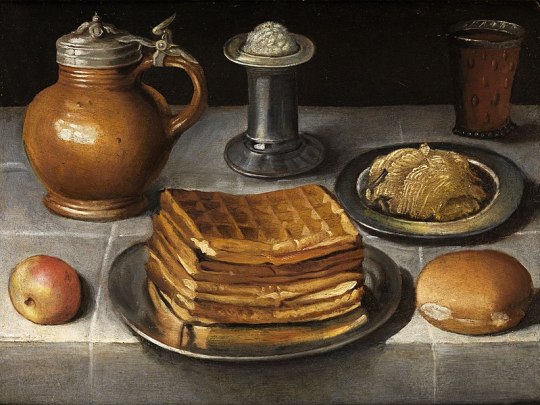
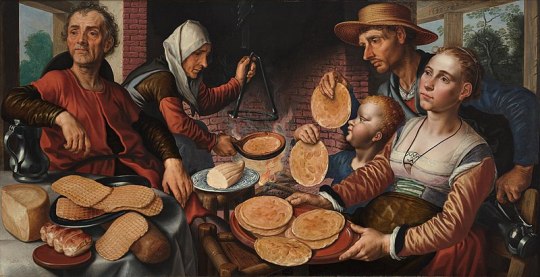
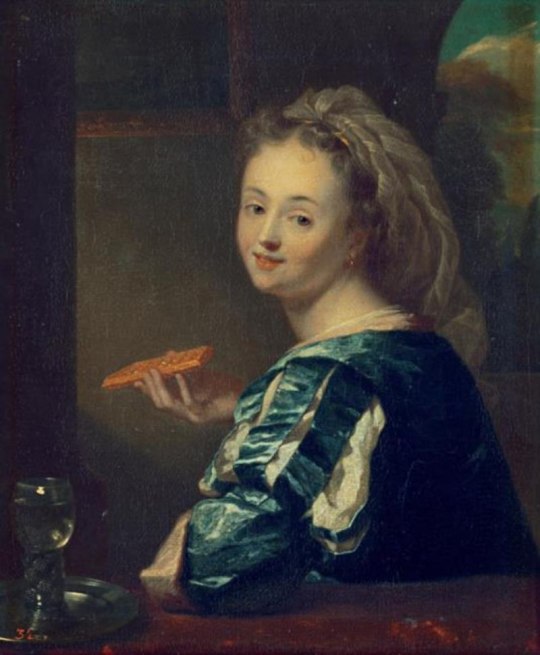

I watched the Townsend episode on waffles (after watching the one on oatmeal) and I was so mad at my college art school professors when I found out that "waffle painting" is like a whole secret subgenre of Dutch 16th, 17th, and 18th century painting. How many weirdly cryptic Vermeers did I stare down for a week in college when I could have been looking at paintings like these??
Also if you haven't seen 17th century watermelon paintings, here are a couple demonstrating less finely cultivated/raised watermelons than we are usually familiar with. Some say they were simply underripe, underwatered, going bad, artistic license, but they do seem to have a thicker rind than modern watermelons as well.
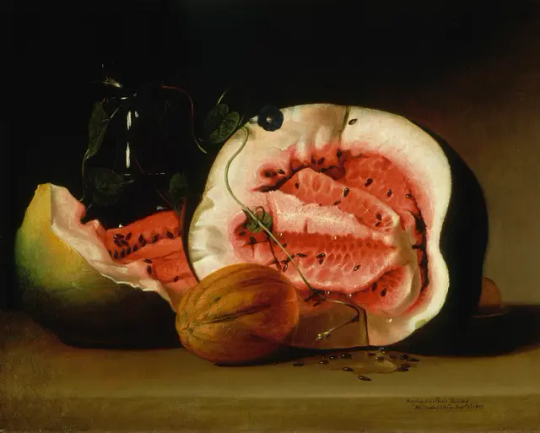

6 notes
·
View notes
Text



Yashima Gakutei, Crabs Near the Water's Edge, ca. 1830
Vincent van Gogh, A Crab on its Back, Paris, August-September, 1887
Vincent van Gogh, Two Crabs, 1889
#Yashima Gakutei#japanese prints#vincent van gogh#japanese artist#japanese art#asian art#dutch artist#dutch art#dutch painting#dutch painter#sea life#crabs crabs crabs#crustacean#wildlife#animals in art#art on tumblr#aesthetic#beauty#modern art#art history#tumblr art#tumblrpic#tumblrpictures#tumblraesthetic#aesthetictumblr
2K notes
·
View notes
Text


Vincent van Gogh - flowering orchards with a view of Arles, 1889.
528 notes
·
View notes
Text

Cornelis Cornelisz. van Haarlem, The Fall of the Titans (detail), 1588-1590. Oil on canvas, 239 x 307 cm. National Gallery of Denmark, Copenhagen.
#painting#art#detail#Cornelis Cornelisz. van Haarlem#van haarlem#dutch painting#dutch art#netherlandish art#netherlandish painting#1500s#16th century#baroque#baroque art#baroque painting
65 notes
·
View notes
Text


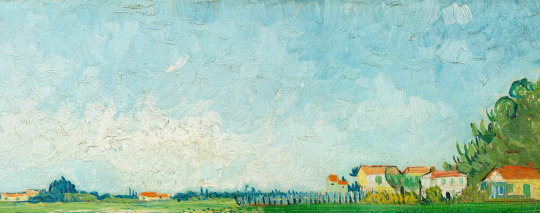
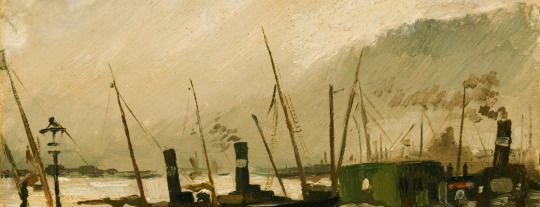
Vincent van Gogh and his skies.
Montmartre: Behind the Moulin de la Galette (detail) . 1887
Square Saint-Pierre at Sunset (detail). 1887
Field with Poppies (detail) . 1888
The De Ruijterkade in Amsterdam (detail). 1885
#happy birthday vincent!#vincent van gogh#art#art history#art detail#detail#details#painting#19th century#19th century painting#dutch painting#dutch#van gogh
90 notes
·
View notes
Text

Saint John the Baptist in the Wilderness, Hieronymus Bosch (c. 1489) Museo Lázaro Galdiano, in Madrid.
#art#painting#art history#artists on tumblr#artwork#classic painting#classical art#classic art#hieronymus bosch#bosch#saint john the baptist#saint john#oilpainting#oil painting#oil on canvas#dutch artist#dutch painting#dutch golden age#lazaro galdiano#art museum#madrid#15th century#15th century art#religious painting#religious#religi#el bos#san jua#museo de arte
447 notes
·
View notes